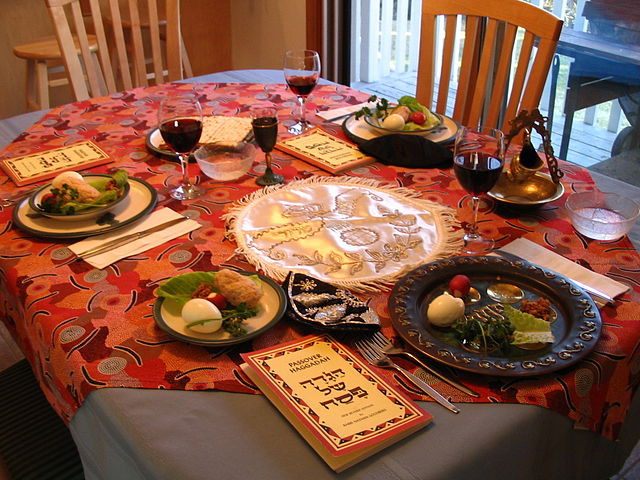
Passover
What Is Passover?
Passover is coming up at the end of the month. But what exactly is it and how is it celebrated?
Also known as Pesach in Hebrew, Passover is a Jewish festival that marks the moment when Moses led the Jewish people to freedom after hundreds of years of enslavement under the Egyptians. The festival of Passover, which typically lasts eight days (or seven for those who live in Israel), has been celebrated since around 1300 BC and always begins on the 15th day of the Hebrew month of Nisan, though this date is subject to change each year within the Gregorian calendar. This year, Passover will begin on Monday the 22nd April and end on the 30th.
Seder
There are many traditional elements to the celebration which are typically observed during Passover. One of the most important of these is Seder. Seder is a ceremonial meal (pictured, when fully set out) which is usually held on the first two nights of Passover. The meal typically includes a reading of the Haggadah, a text which recounts the Exodus of the Jews from Egypt, along with prayers and blessings and questions from children about Passover. A number of symbolic foods are included during the meal, the elements of which make up the Seder Plate. This includes Maror: bitter herbs which represent the harshness of slavery; Charoset: a sweet mixture which represents the bricks and mortar that the Jews would have used to build the pyramids; Karpas: vegetables, often dipped in salt water, which represents the hard work of the enslaved Jews; Zeroah: a roasted lamb bone to represent the sacrificial lamb offered in the Temple of Jerusalem; and Beitzah: a hard-boiled egg which was a typical offering brought to the Temple. All of this is accompanied by matzah (a cracker-like form of unleavened bread). Matzah is a significant element throughout Passover as many Jews refrain from eating typical bread products which contain grains that have come into contact with water and been allowed to ferment and rise. These products are also known as chametz and the removal of chametz forms another traditional part of Passover, with many households undertaking a thorough cleaning of their home to remove any traces of chametz. In ancient times, Passover also involved the sacrificing of a lamb which was then eaten as part of the Seder meal. These sacrifices don’t occur today, but the sacrificial lamb remains an important symbol of Passover.
To observe Passover, some households will refrain from work during the first two and final two days of the festival, and some of the more dedicated observers may avoid driving, using electricity and spending money. The seven or eight days of Passover are a time for celebration and, in addition to the Seder meal, it is a time where Jewish people come together with family and friends to eat, drink, share stories and enjoy music. Passover presents a key opportunity for families to talk about Judaism with their children, helping to ignite and maintain interest in Jewish culture and faith whilst ensuring that the history of the Jewish people is not forgotten.
For more information about Passover, visit Chabad.org: What Is Passover (Pesach)?
Oxford Open learning offers a chance to study a range of subjects at a variety of levels. You can find what is available by visiting our home page, or you can Contact Us and speak to a student adviser for more information.